
His touch ignited a cascade of sensations, sending electric shivers down her spine. Their lips met with an intensity that defied the constraints of time and space. In that stolen moment, the world around them faded into insignificance, replaced by the intoxicating dance of their tongues and the race of their hearts. It was a kiss that set their souls ablaze, igniting a fire that could never be extinguished.
The power of a well-crafted kiss scene cannot be overstated—it has the ability to transport readers to a world where desire burns like a flame, and emotions intertwine in an exquisite dance.
Crafting a captivating kiss scene is an art form in its own right.
Whether you’re an aspiring author seeking guidance or a seasoned writer searching for fresh insights, this comprehensive guide on how to write a kiss scene will equip you with the tools and techniques to weave unforgettable kiss scenes into the fabric of your stories.
The act of kissing is more complicated than it seems, and for that reason, I’ve created a detailed breakdown based on various aspects that affect the overall quality of the kiss scene:
- Setting the stage – Creating atmosphere and building anticipation
- Character development and chemistry – Portraying emotions, personalities, and attraction
- Writing and describing the kiss scene – Physical description, details, emotions, and tension (with a TON of examples, vocab, actions, and more!)
- Writing emotions – Internal monologues and the power of words
- Aftermath and reflections – How do they feel about what just happened
This way you can easily skip steps that you already know how to execute and focus on what you want to learn and do better.
Let’s get into writing the best kiss scene, then! 💋
Setting the stage

Setting plays a vital role in any scene, including kiss scenes.
It serves as the backdrop against which the characters’ emotions and actions unfold, enhancing the intensity and impact of the moment.
The right setting can evoke specific moods, heighten tension, and immerse readers in the experience.
By carefully crafting the setting, you create a rich tapestry that enhances the overall romantic ambiance and amplifies the emotional connection between your characters.
A good setting consists of the following elements:
- Atmosphere
- Location, ambience
- Mood
- Sensory details
- Anticipation
- Emotional states and tension between characters
- Foreshadowing and subtle hints to hint at an impending kiss
- Characters’ desires and motivations
Let’s break each of these into detail.
Creating the right atmosphere
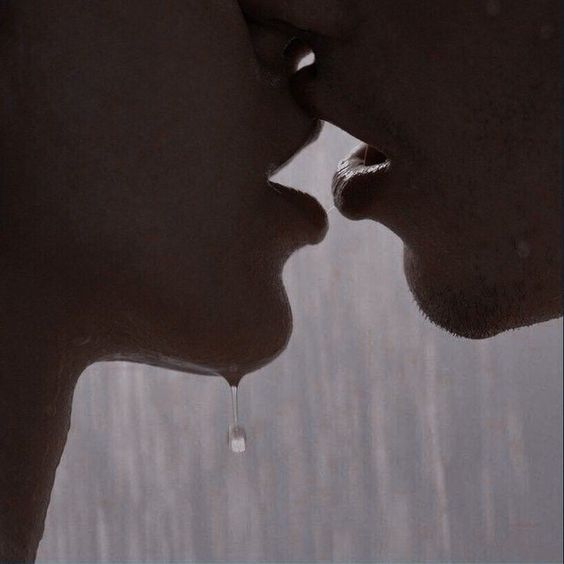
Creating the atmosphere aims to immerse your readers in a rich and evocative environment.
You can establish the atmosphere using the following techniques:
- Describing the location and its impact on the mood:
The choice of location greatly influences the ambiance and emotional tone of the kiss scene. For example, imagine a moonlit rooftop overlooking a sprawling cityscape.
Describe the moon’s soft glow, the distant sounds of traffic, and the cool breeze that rustles their clothes.
By painting a vivid picture, you transport readers into the moment, heightening the romantic allure and setting the stage for an unforgettable kiss.
Example: “Their eyes met atop the ancient castle tower, bathed in the ethereal glow of a full moon. The distant howl of the wind echoed through the desolate ruins, creating an air of mystique and untamed passion. The soft mist caressed their skin, adding an intoxicating touch of secrecy to their forbidden encounter.”
- Utilizing sensory details to enhance the ambiance:
Engaging the senses enables readers to immerse themselves fully. Incorporate sensory details to evoke emotions and create a sensory experience that resonates with the readers.
Describe the sights, sounds, smells, tastes, and physical sensations to deepen the connection between the characters and the setting.
Example: “The gentle lapping of waves against the shore provided a rhythmic backdrop to their dance of desire. The salty sea breeze carried the scent of brine and adventure, mingling with the floral notes of nearby blossoms. As their lips met, the taste of sea spray mingled with the sweetness of ripe strawberries, creating an intoxicating blend that mirrored their growing passion.”
Building anticipation
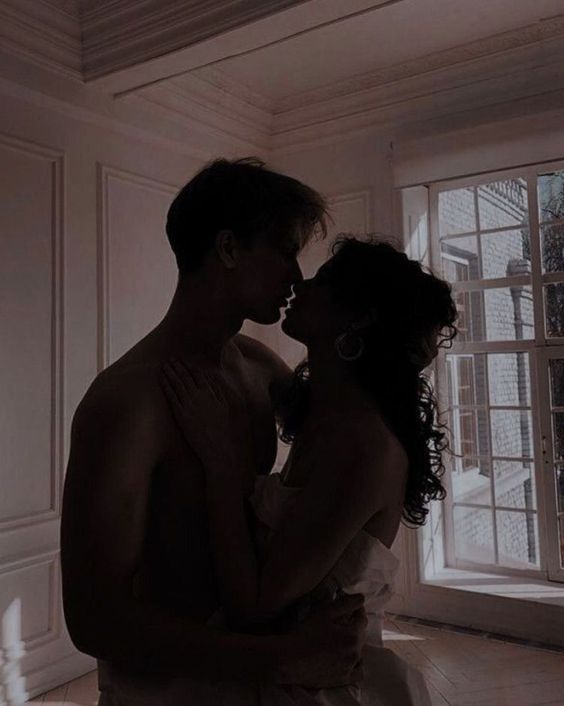
You are building anticipation since the first sentence on page 1 of your book.
Everything your characters do before the kiss should build tension and anticipation for it.
There are three key elements to this:
- Emotional states and tension between characters
- Foreshadowing and subtle hints to hint at an impending kiss
- Showcasing characters’ desires and motivations
Emotional states and tension between characters:
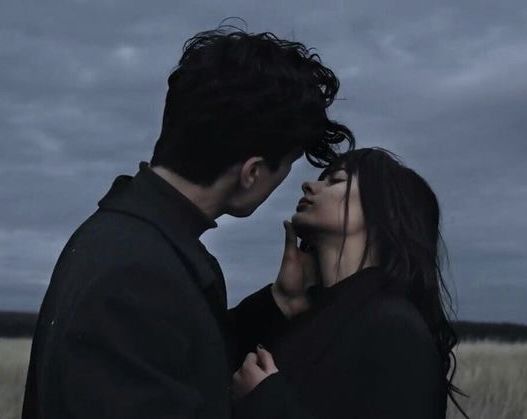
To build anticipation in your kiss scenes, it’s crucial to focus on the emotional states and tension between your characters.
Develop their emotional connection by showcasing their desires, fears, and vulnerabilities.
Let their awareness of each other grow through subtle gestures, stolen glances, and heightened senses.
Create tension through dialogue that includes witty banter, playful teasing, and charged exchanges that hint at their mutual attraction.
Dive deep into the characters’ inner conflicts, past heartbreaks, insecurities, and conflicting desires to deepen the emotional stakes.
Foreshadowing and subtle hints to hint at an impending kiss:
Employ foreshadowing and subtle hints to suggest an impending kiss.
Use physical cues and body language like lingering touches, brushing fingertips, or accidental grazes to build anticipation.
Describe vivid sensory details, such as the taste of the air, the warmth of their proximity, or the electric atmosphere, to heighten the reader’s anticipation.
Employ metaphorical language and symbolic imagery, such as the scent of blooming roses or the crackling of a fire, to foreshadow the passionate connection.
Hint at the characters’ internal thoughts and desires, subtly expressing their yearning for physical intimacy without explicitly stating it.
Show characters’ desires and motivations:

Explore their backstories, personal goals, and motivations to understand what drives their attraction.
Highlight their unfulfilled needs and longings, emphasizing how the other character fulfills those desires.
Introduce conflicts or obstacles that challenge their desires, intensifying the anticipation. Show the growth and development of the characters as their desires evolve, bringing them closer to the anticipated kiss.
For example: In that fleeting moment, time stood still as their lips met, and a whirlwind of emotions cascaded through her. A surge of longing overwhelmed her senses, her heart pounding against her chest. She surrendered herself to the intensity of the kiss, her body responding instinctively to his touch.
Character development and chemistry

In the realm of romance writing, a kiss is seldom just a kiss. It’s an intimate act loaded with significance and potential, capable of changing the trajectory of your characters’ lives. – Your Shadow
Writing a compelling and authentic kiss scene begins and ends with your characters.
After all, this is their moment—intimate, vulnerable, and charged with emotion.
Here’s how to develop the characters involved to make the kiss feel just right.
Delving into their personalities, quirks, and desires

Start by sketching a mental portrait of your characters.
Who are they, and what brought them to this moment? Is one shy, withdrawn, and secretive?
Perhaps the other is outgoing, brave, and exuberant. Their personalities will impact how they approach the kiss and react afterward. Do they linger, savoring the moment, or do they pull away, overcome with embarrassment or surprise?
Similarly, their quirks and desires will also play a significant role.
A character with a penchant for dramatic gestures might orchestrate a grand scene, whereas a more reserved one might prefer a stolen kiss when no one’s looking.
Understanding their desires can add another layer of complexity. Are they longing for love, seeking comfort, or testing the waters of attraction?
Each desire will shape the moment in its unique way.
Exploring their emotional states and inner conflicts
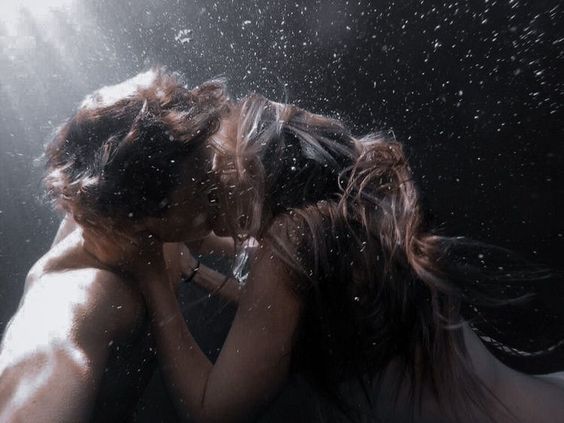
Just as important as who your characters are is what they’re feeling — the emotional journey that led to the kiss and the aftermath that follows.
The emotional state of your characters is critical. Is this a joyous moment of mutual love, a desperate act of passion, or a tense exchange filled with uncertainty?
Inner conflicts can add depth and tension to the scene.
Maybe one character has been hurt before and is terrified of being vulnerable again. Perhaps the other is struggling with feelings they don’t fully understand or accept yet.
These conflicts can make the kiss more than a simple act—it can be a pivotal moment in their character arc, a turning point where they confront their fears, longings, or doubts.
Establishing a strong emotional connection between the characters
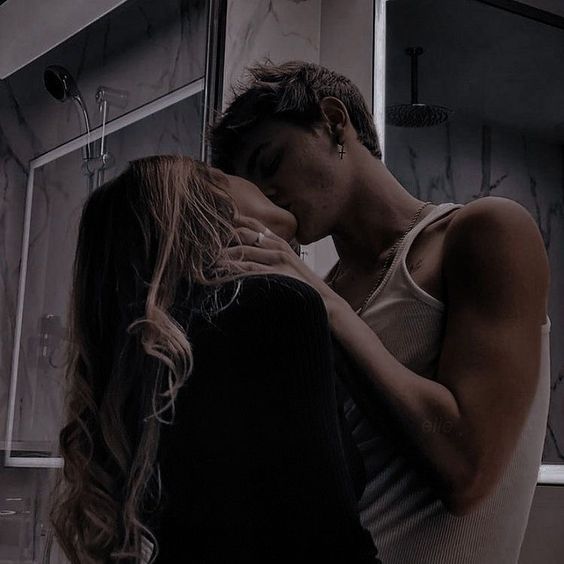
The emotional connection between your characters is the foundation upon which you build their romantic chemistry.
This connection needs to be well-established and deeply-rooted. To do this, invest time in showing how these characters relate to each other outside of the romantic context. Maybe they connect over shared hobbies, mutual struggles, or personal goals. Or perhaps they share experiences that help them understand each other on a deeper level.
Don’t just tell your readers about this connection, show it. Make them feel the characters’ bond through dialogue, shared experiences, and inner thoughts.
This might be a shared joke only they understand, a silent look that speaks volumes, or comfort in silence when the rest of the world seems too loud. The more genuine and organic this emotional connection feels, the more your readers will root for the romantic relationship to bloom.
Here are a few examples:
1: Shared Interest
Jordan had an infectious enthusiasm for the written word, something Alex hadn’t encountered often. When Jordan’s eyes lit up discussing Emily Dickinson or Robert Frost, Alex felt a warmth that she couldn’t understand. It was as if Jordan was translating the world into a language only they both understood.
2: Mutual Struggles
“Sometimes, it feels like the road is eating me up,” Jordan whispered, “like I’m losing pieces of myself in each town.”
“I understand,” Alex said softly, “I feel lost in my world sometimes too. Like I’m just fading into the background.”
A moment passed, filled with understanding, loneliness, and unexpectedly, comfort.
3: Personal Goals
Alex watched as Jordan scribbled furiously in a notebook, the spark of inspiration vivid in his eyes. It was a sight that made Alex want to reach for her own dreams, to reveal the stories hidden within herself. And with Jordan’s unwavering support, those dreams seemed a little less daunting.
Showing their growing attraction and intimacy leading up to the kiss

A kiss shouldn’t come out of the blue—it should be the natural culmination of growing attraction and intimacy. Show this progression through subtle moments and changes in their relationship.
This could be a shift in their dialogue, from friendly banter to intimate conversations, or an increasing awareness of each other’s physical presence.
Physical touch is a powerful tool to convey growing attraction, even if it’s innocent at first. A comforting hand on the shoulder, a playful shove, an accidental brush of fingers—these are all subtle signs of changing dynamics.
Remember to their internal reactions to these shifts. Are their hearts racing, palms sweating, and minds wandering towards each other at odd moments? Are they struggling with these feelings or welcoming them?
Remember, attraction and intimacy can be as much about longing and tension as about fulfillment. The anticipation of the kiss can be just as powerful—if not more so—than the kiss itself.
Here are a few examples:
Mark found himself noticing the way Maeve’s hands moved when she talked, expressive and graceful. The way her eyes shone with passion as she discussed a new melody. Even the way she laughed, head thrown back, carefree and infectious. It made Mark’s heart flutter, a feeling both unsettling and exhilarating.
Jordan reached out, swiping away a stray speck of dust from Alex’s sweater. His fingers brushed the fabric lightly, a touch as brief as a whisper, but it made Alex’s breath hitch. She looked up to find Jordan staring back, his eyes wandering off awkwardly.
Writing and describing the kiss

Physical description
When writing the kiss, provide a vivid physical description that brings the characters to life in the reader’s mind. Describe their physical features and appearances in a way that highlights their unique qualities and enhances the sensual experience of the kiss.
Bring attention to specific details that capture the characters’ attractiveness and create a visual image in the reader’s mind. Highlight their soft lips, sparkling eyes, or the way their hair falls against their face. Paint a picture that showcases their allure, making the kiss scene more visually engaging.
Example: His eyes, a mesmerizing shade of deep blue, twinkled with anticipation as he leaned in closer, his lips, full and inviting, beckoning her to taste their sweetness.
Body language plays a crucial role in conveying the emotions and intensity of the kiss. Describe their movements, such as the tilt of their heads, the gentle brush of fingertips against cheeks, or the slow, tantalizing dance of their lips.
Use evocative language to paint a sensual and intimate picture of their physical connection.
Example: Their bodies moved in perfect synchrony, his hands cradling her face as he leaned in, capturing her lower lip between his, their breaths mingling in a passionate dance. The world around them faded away as their bodies pressed closer, lost in the intoxicating embrace.
Here’s a list of words/phrases to get you started:
- Head Movements – Tilting to the side, nodding slightly in anticipation, turning towards the other person, lowering to meet the other person’s height, lifting up on toes.
- Eye Expressions – Soft, longing, nervous, intense, closed, sparkling with excitement, darting away in shyness, wide in surprise, hooded with desire.
- Facial Expressions – Smiling, blushing, nervous biting of the lip, a faint frown of concentration, a look of surprise, a relaxed expression.
- Cheeks – Warm, flushed, brushed by the other’s fingers, resting in the other person’s hand, brushing against the other’s cheek.
- Breath – Quickening, ragged, held in anticipation, slow and calm, shaky with nerves, soft sighs.
- Lips – Moist, dry, trembling, eager, hesitant, parted slightly, responding to the other’s touch, trailing kisses down the jawline.
- Tongue – Lightly touching the other’s lips, exploring the other’s mouth, retreating shyly, teasingly tracing the other’s lower lip.
- Teeth – Gently pulling on the other’s lip, clashing in eagerness, biting back a moan, grinning in a playful kiss.
- Skin – Goosebumps arising, flushed with heat, damp with nervousness or anticipation, reacting to the other’s touch, contrasting textures (smooth, stubble, soft, rough).
- Hands – Intertwining fingers, hands resting on the other’s waist or neck, fingers tangling in hair, tracing the other’s features, shaking with nerves, firm with sureness.
- Arms – Pulling the other closer, supporting the other’s weight, encircling the other’s waist, bracing themselves against a wall.
- Body – Leaning in to close the gap, tension coiling in readiness, freezing in surprise, melting into the kiss, pulling back in hesitation.
- Legs – Stumbling forward, stepping closer, bracing for balance, curling around the other person’s waist.
- Nonverbal Vocalizations – Soft gasps, quiet moans, held back whimpers, sharp intake of breath, a soft chuckle, silent laughter.
- Environmental Details – The setting, the weather (rain, wind, heat), ambient sounds (crashing waves, bustling crowd, quiet room), scents (perfume, natural odor, the surrounding smells).
- Describing the Kiss – Passionate, gentle, fierce, soft, heated, desperate, lingering, sweet, slow, hurried, tender, rough, loving, chaste, electrifying, sensual, breathless, exploratory, fiery, hesitant, tentative, demanding, possessive.
- Describing the Atmosphere – Intimate, tense, relaxed, charged, awkward, comfortable, uneasy, romantic, platonic, forbidden, secretive, public, private.
- Describing the Pace – Fast, slow, frantic, languid, urgent, leisurely, impatient, steady.
Actions that can heat up your kiss scene:
- Lip biting: In the heat of the moment, his teeth gently grazed my lower lip, tugging slightly, sending a thrilling shiver down my spine.
- Lip sucking: His lips were a magnetic force, pulling my bottom lip into his mouth. The gentle suction was a sweet, intoxicating sensation that filled me with an overwhelming desire, each pulse echoing in my veins.
- Tongue sucking: In an audacious move, he lured my tongue into his mouth, his lips and teeth applying a light, provocative pressure that was dangerously intoxicating. A deliciously wicked act that had my heart hammering in my chest.
- Lip licking: Her tongue darted out, tracing the outline of my lips, a tantalizing preview that made my pulse jump.
- Hand tracing: His fingers traced the curve of my waist, making my breath hitch. The contact was light but electric, sending a wave of desire cascading through me.
- Neck nuzzling: Her breath on my neck sent chills down my spine. As her nose nuzzled the sensitive skin, I felt an intoxicating rush of want coursing through my veins.
- Earlobe nibbling: The soft nips she planted on my earlobe made my pants feel tighter—every nerve ending seemed to come alive at her touch.
- Thigh squeezing: His hand slid down to my thigh, his grip firm yet tender, the pressure making my heart beat wildly.
- Hair tugging: She gently tugged at my hair—a raw, exhilarating sensation that added a thrilling edge to the whole situation.
- Back scratching: His nails lightly scratched my back, creating a tingling trail of heat that was both comforting and intoxicating, pushing me further into a whirlpool of desire.
- Breast caressing: His hand traced a burning path up to my chest, fingers ghosting over the sensitive skin, making me spiral into the depths of heady desire.
- Hip grinding: Her hips pressed against mine, creating a delirious friction that was almost too much to bear.
- Navel trailing: He traced a path down to my navel with his tongue, each swirl making my breath hitch.
- Inner thigh-grazing: Her fingers delicately grazed my inner thigh, every touch igniting a trail of fire on my skin. The proximity was dangerously erotic, pushing me to the edge of control.
- Backside grasping: His hand firmly grasped my butt, pulling me closer into him.
- Tugging at clothes: His fingers deftly unbuttoned my shirt, every tug sending my heart into a frenzy. The subtle rustle of fabric and the cool air against my skin sent a rush of anticipation through me.
- Breathless whispers: His whispers danced across my skin, his voice husky and low, laden with desire, striking me at my very core.
When writing make out scenes, most writers focus on mouth and kiss itself, but a good make out scene incorporates everything: what their bodies are doing, how they’re feeling, what they’re thinking, the atmosphere and setting around them and everything that led up to that moment.
Sensory details

Explore the sensations that arise during the kiss, such as the taste of their lips, the warmth of their touch, and the intoxicating scent that envelops them.
Use sensory language to evoke a sensory experience for the reader, immersing them in the moment.
Example: The taste of his lips, a bittersweet blend of desire and urgency, sent shivers down her spine. The soft graze of his fingertips against her cheek sparked a trail of electricity that coursed through her veins. The faint scent of his cologne, a heady mix of sandalwood and musk, intoxicated her senses.
Here are some examples of sensory words related to each of the five senses:
- Sight: Glimmering, sparkling, vibrant, radiant, vivid, dazzling, radiant, vibrant, luminous, glistening, gleaming, captivating, enchanting, breathtaking, alluring.
- Sound: Whisper, murmur, sigh, rustle, gasp, breathless, melodious, melodic, rhythmic, whisper, moan, hushed, seductive, tantalizing, passionate, intoxicating, resonant, reverberating.
- Touch: Soft, velvety, silky, tender, electric, tingling, caress, graze, stroke, graze, embrace, clutch, velvety, silky, soft, smooth, tantalizing, fiery, magnetic.
- Taste: Sweet, savory, tangy, delectable, luscious, tantalizing, succulent, delicious, sweet, intoxicating, mouthwatering, flavorful, divine, tantalizing.
- Smell: Fragrant, alluring, intoxicating, aromatic, fresh, floral, musky, captivating, enticing, tantalizing, subtle, sweet, musky, fresh, invigorating, seductive.
Here are examples of how you can incorporate each sense into your writing:
- The soft glow of candlelight casted shadows across their faces.
- The soft whisper of his name, spoken in a hushed tone, filled the air like a secret melody.
- He trailed his hand along the curve of her waist, savoring the softness of her skin beneath his touch.
- The sweetness of her lips lingered on his tongue, a tantalizing blend of desire and innocence.
- His cologne, a seductive blend of musk and sandalwood, enveloped her senses, drawing her closer.
Incorporate the sounds and sensations that accompany the kiss. Describe the gentle sighs, the rhythm of their breaths, or the fluttering of hearts. Use expressive language to convey the heightened sensations and create a multisensory experience for the reader.
Example: The soft sighs that escaped their lips resonated like a symphony of desire. The rhythmic ebb and flow of their breaths mirrored the cadence of their intertwined souls. Their racing hearts, a testament to the intensity of the moment, reverberated through their chests.
Emotion and intensity
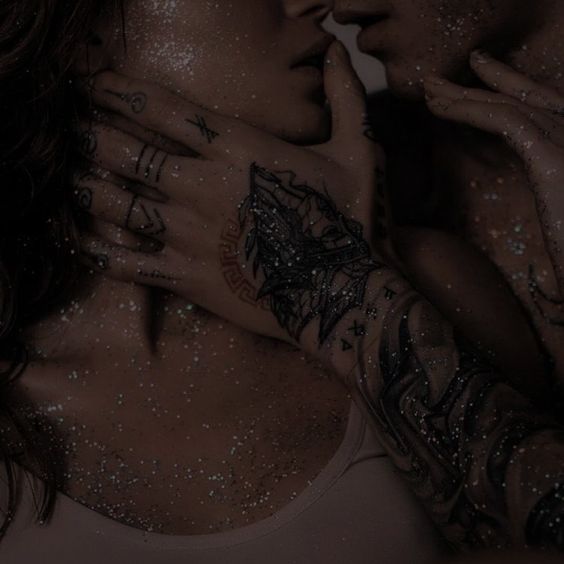
A well-written kiss scene should convey the characters’ feelings and emotions, allowing readers to experience the depth of their connection.
Showcase the characters’ inner turmoil, desires, and vulnerability through their actions and thoughts during the kiss.
Explore their internal dialogue, capturing their anticipation, yearning, or surprise. You can deepen the readers’ emotional investment in the scene by expressing their emotions authentically.
Example: In that fleeting moment, time stood still as their lips met, and a whirlwind of emotions cascaded through her. A surge of longing overwhelmed her senses, her heart pounding against her chest. She surrendered herself to the intensity of the kiss, her body responding instinctively to his touch. Thoughts of doubt and hesitation vanished as their lips moved in perfect harmony, speaking a language only they understood. Her mind swirled with a mixture of desire, vulnerability, and a hunger for more. The weight of their shared passion consumed every inch of her being, igniting a fire that blazed between them. As their breath mingled and their bodies pressed closer, she knew, without a doubt, that this kiss would forever be etched in her memory.
You create a more immersive and emotionally resonant kiss scene by focusing on the characters’ internal experiences and thoughts. This allows readers to connect with the characters deeper, sharing their desires and vulnerabilities.
Evoking Emotion
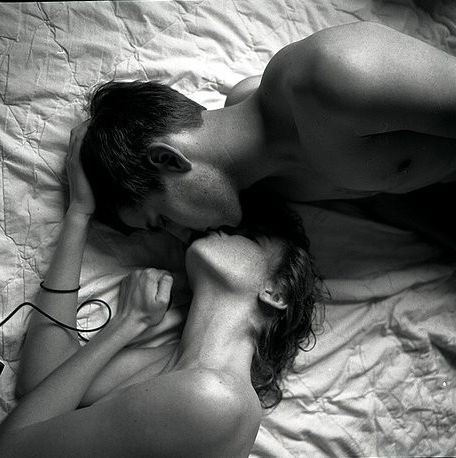
The power of words
To enhance the emotional impact of the kiss scene, carefully select words that evoke specific emotions.
Instead of simply stating that the kiss was passionate, explore vivid descriptors like “fiery,” “intoxicating,” or “electric.”
Remember to use sensory words to paint a rich picture in the reader’s mind, such as “velvet-soft lips” or “tasting the sweetness of desire.”
Remember that as a writer, you have the creative freedom to use metaphors and similes to capture the essence of the kiss scene.
Here are some examples of metaphors and similes:
Metaphors:
- Her lips were velvet petals, inviting and soft.
- Their kiss was a symphony of flavors, blending sweet and tangy notes.
- His touch set her soul ablaze, igniting a wildfire of desire.
- The kiss was a delicate dance, their lips moving in perfect harmony.
- Their embrace was a magnetic force, drawing them closer with every breath.
Similes:
- Their lips met like a summer breeze, gentle and refreshing.
- The taste of their kiss lingered on her tongue like a fine wine.
- Their connection was as electrifying as a lightning strike, sending shivers down their spines.
- Their lips melded together like two puzzle pieces, completing a perfect picture.
- The intensity of their kiss was like a tidal wave, crashing over them with unbridled passion.
Don’t:
- Don’t use weird metaphors and awkward words. The “Dolphin-slippery” metaphor for describing tongues in Sophie’s Choice is such a turnoff and I am still to this day traumatized by it.
- “Our tongues tangled, battling for dominance” NO – tongues don’t battle and tangle, it is cringe and feels wrong.
Internal monologues

Internal monologues allow the reader to slip into the character’s mind and understand how they feel at the given moment.
Revealing the characters’ thoughts and desires during a kiss scene adds depth and intimacy.
Show their racing thoughts, conflicting desires, and the internal struggle they might be experiencing. For example:
Her mind whirled with a cascade of thoughts as their lips met. Should she surrender to this intoxicating passion or hold back? Her heart urged her to dive deeper, to lose herself in his embrace, but her cautious nature fought against it.
Balancing internal reflection with external actions to deepen the emotional connection

While revealing the characters’ internal thoughts and emotions is important, it’s vital to depict their external actions and reactions.
Blend descriptions of their physical movements, body language, and facial expressions with their internal reflections. This combination allows readers to connect with both the characters’ inner world and their visible responses. For example:
As their lips met, she felt a surge of warmth radiating from her core, igniting a passionate response she couldn’t suppress. Her body leaned into his, her hands finding their way to the back of his neck, pulling him closer, while her mind raced with a thousand thoughts, each one affirming her desire for this connection.
- Subtext
Use subtext to add depth to the characters’ interactions during the kiss. Show what is left unsaid, the unspoken desires and unfulfilled longings that are conveyed through subtle cues.
This allows readers to read between the lines and engage with the characters’ emotional journey. For example:
Their eyes locked for a brief moment before their lips touched, conveying a shared understanding that words couldn’t capture. In that silent exchange, they communicated volumes, their desires entwining with the lightest of touches, and the unspoken promise of what lay ahead.
- Internal Reflection in Response to External Stimuli
Allow the characters to reflect on their external experiences during the kiss. Their thoughts and emotions can be influenced by their sensations, the taste of their partner’s lips, or how their bodies respond to the physical connection.
This interplay between internal and external elements adds richness to the scene. For example:
The soft graze of his thumb against her cheek sent a rush of warmth through her, heightening the intensity of their kiss. In that moment, her thoughts melted away, consumed by the taste of him, the electrifying touch that left her breathless and craving more.
Aftermath and reflection

The kiss, no matter how beautifully written, is only part of the story. What happens afterward also plays a crucial role in character development and plot progression.
Capturing the aftermath
1. Depicting the characters’ reactions and their immediate surroundings
In the aftermath of the kiss, your characters’ reactions will depend on their personalities and emotional states.
They can stand there stunned, their hearts still racing, or maybe they break into shy smiles. Are there tears of joy, relief, or regret?
Capture their responses to the kiss with as much detail as the kiss itself.
Equally important are the immediate surroundings. Has the world around them stopped or is it rushing past oblivious to their moment? The setting can reflect their inner turmoil or joy, enhancing the emotional impact of the scene.
The moment Bella pulled back from Ethan, the reality of their actions crashed over her. The lively house party around them felt miles away, the music a muted buzz in her ears, the chattering laughter a distant echo. The corner they stood in felt like a spotlighted stage, their guilty faces the center of an invisible drama. Ethan’s shocked expression was a mirror to her own, his eyes wide with regret and fear that matched the pounding in her chest.
2. Conveying the lingering effects of the kiss on their emotions and relationship

A kiss can leave a lingering impression.
Whether it leaves them feeling elated, confused, or anxious, these emotions will influence their interactions moving forward.
How has the kiss changed their perception of each other and of their relationship? This aftermath is an opportunity to explore the immediate emotional consequences and how it sets the stage for the subsequent development of their relationship.
Example 1: Emma’s mind was a whirl of heated images and sensations — the feel of Lucas’s lips on hers, the taste of his kiss, the hardness of his body against hers. A heat curled low in her belly, unfurling with every memory of their charged encounter. It was a hunger she hadn’t anticipated, a thirst that was far from quenched. Every thought of Lucas was a spark igniting her senses, the aftershocks of their passionate kiss refusing to subside.
Example 2: The moment her lips left Ethan’s, Bella’s euphoria crashed into regret. She’d betrayed the one person who meant the most to her, and for what? A moment of reckless abandon. The guilt was a tangible taste in her mouth, a heavy stone in her heart. Each time she closed her eyes, she saw Ethan’s shocked expression, a mirror of her own feelings. She was tangled in a web of her own making, and she didn’t know how to free herself.
Reflecting on the significance

1. Exploring the deeper meaning behind the kiss in the context of the story
The kiss isn’t just a physical act, it’s a symbol, a turning point, or a revelation.
Reflect on its significance in the broader context of your story. Perhaps it marks the culmination of a slow-burning romance, the shattering of old barriers, or a moment of shared solace in a world of chaos.
This reflection can deepen the emotional resonance of the kiss and anchor it firmly within your narrative.
For Bella, the kiss she shared with Ethan wasn’t just about cheating on her boyfriend. It was also a manifestation of her inner conflict and dissatisfaction in her current relationship.
For Bella, kissing Ethan was a moment of painful clarity. It wasn’t just about betraying her boyfriend; it was an ill-judged attempt to fill a void she’d been feeling in her relationship. Ethan had been there, understanding and supportive when her boyfriend was not. The kiss was a symptom of her internal struggle, a mirror reflecting her unhappiness and confusion. It had consequences that extended beyond the immediate guilt; it was a signpost pointing towards deeper issues she had to address.
2. Foreshadowing the impact of the kiss on the characters’ future interactions
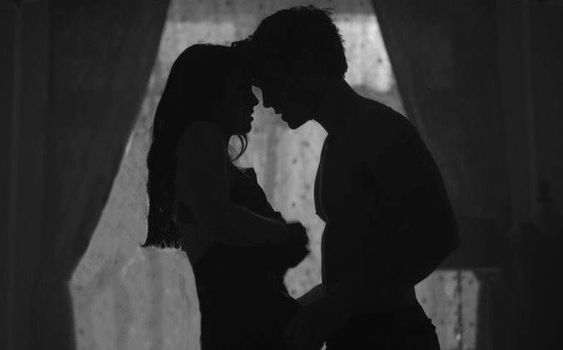
The kiss is a catalyst, setting things in motion.
It might bring them closer, tear them apart, or complicate their relationship. This is a chance to foreshadow these future changes subtly.
Will they tread carefully around each other, feel more emboldened in expressing their feelings, or will regret start to seep in?
As Bella’s story unfolds, the impact of her kiss with Ethan could lead to turmoil and self-reflection in her relationship with her boyfriend.
Bella couldn’t help but feel a wave of dread every time she thought of seeing Ethan again, especially in the presence of her boyfriend. Would he notice the guilty glances exchanged, the tension that sparked in the air? Every laugh, every conversation they’d share, would bear the weight of their secret. And every moment of guilt was a call for Bella to question what was missing in her relationship that had led her to betray the one she loved.
Bonus: Learn from the experts and get in the mood

Reading good romance and erotic books can help you step up your spicy writing game!
Here are some books that feature great kiss scenes:
- Shatter Me by Tahereh Mafi
- Gone With the Wind by Margaret Mitchell
- Haunting Adeline by H.D. Carlton
- 50 shades of gray by E. L. James
- The ritual by Shantel Tessir
- Birthday Girl by Penelope Douglas
Many of these are very steamy 🌶️, but steam authors know their craft!
Another underrated trick is to try and get yourself in the mood for writing spicey stuff!
You can do that in numerous ways:
- Browse instagram for “aesthetic couple kiss” or just “kiss couples”
- Read spicy or erotic books
- Watch a moive
- Turn on the right music or whatever that will get your emotions flowing
- Try to experience it yourself (not necessary, but can help)
There, I hope this answered most of your questions! 😘
Conclusion

Now you have a comprehensive outline to guide you in crafting your blog post on writing a passionate kiss scene.
And remember: Writing a captivating kiss scene requires more than just an understanding of the physical act itself. As we’ve explored in this guide, you must delve deep into the characters’ emotional states, the chemistry between them, and the implications of the kiss for their relationship.
If I had to take one thing out of this guide on how to write a kiss scene, it would be this: Writing a kiss is about illustrating the anticipation, tension, and ensuing emotions in a way that allows the readers to live through the characters’ experience.
Whether the kiss is a soft brush of lips full of love and tenderness, a passionate and lust-filled exchange, or an impulsive act laden with guilt and confusion, each one can impact the characters profoundly and the course of your narrative.
Use these sections as a foundation, and let your creativity run wild!
Happy writing, and remember, make it spicy and captivating!
Yours truly,
Shadow